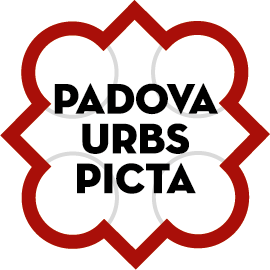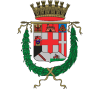The city gateway stood on the first stone pile of the Roman Altinate Bridge (no longer visible) that crossed over the Naviglio Interno [Inner City Canal], which was filled in during the 1960s to create the street now called Via Riviera dei Ponti Romani. The gateway, the bridge and the surrounding neighbourhood (Contrada Altinate) all took their name from the Roman Via Emilia-Altinate that linked Roman Bologna with the town of Altino, an important point on the route to Aquileia.
Nowadays, the distinctive tower structure of Porta Altinate marks the entrance to Piazza Garibaldi. Perhaps dating from the twelfth century, the structure was in 1256 seized and put to the torch by the crusaders fighting against Ezzelino III da Romano (a event commemorated in a plaque with an inscription by Carlo Leoni); it was then rebuilt in 1286. The gateway is a sort of triumphal arch in stone, with an exterior arch that is decorated in imitation of such ancient Roman structures. Above that arch stands a brick-built tower, the upper part of which had already disappeared by the end of seventeenth century. To the right of the gateway is the Monument to Alvisa Pisani, governor of Padua from 1686-1687 and then Doge of Venice. Baroque in style, this monument was commissioned by the Collegio degli Studenti Artist dello Studio Patavino [The Padua University Guild of Students studying Philosophy and Medicine]; the St. Mark’s Lion here was actually carved during the period of Napoleonic rule (when the Republic of Venice no longer existed).
The short stretches of wall to either side of the gateway are the remains of the communal city walls that were spared by demolition work carried out in the 1960s-70s.
- DISCOVER
- LIVE
FOCUS
- GET INSPIRED
FOCUS
- INFO
- BOOK NOW












